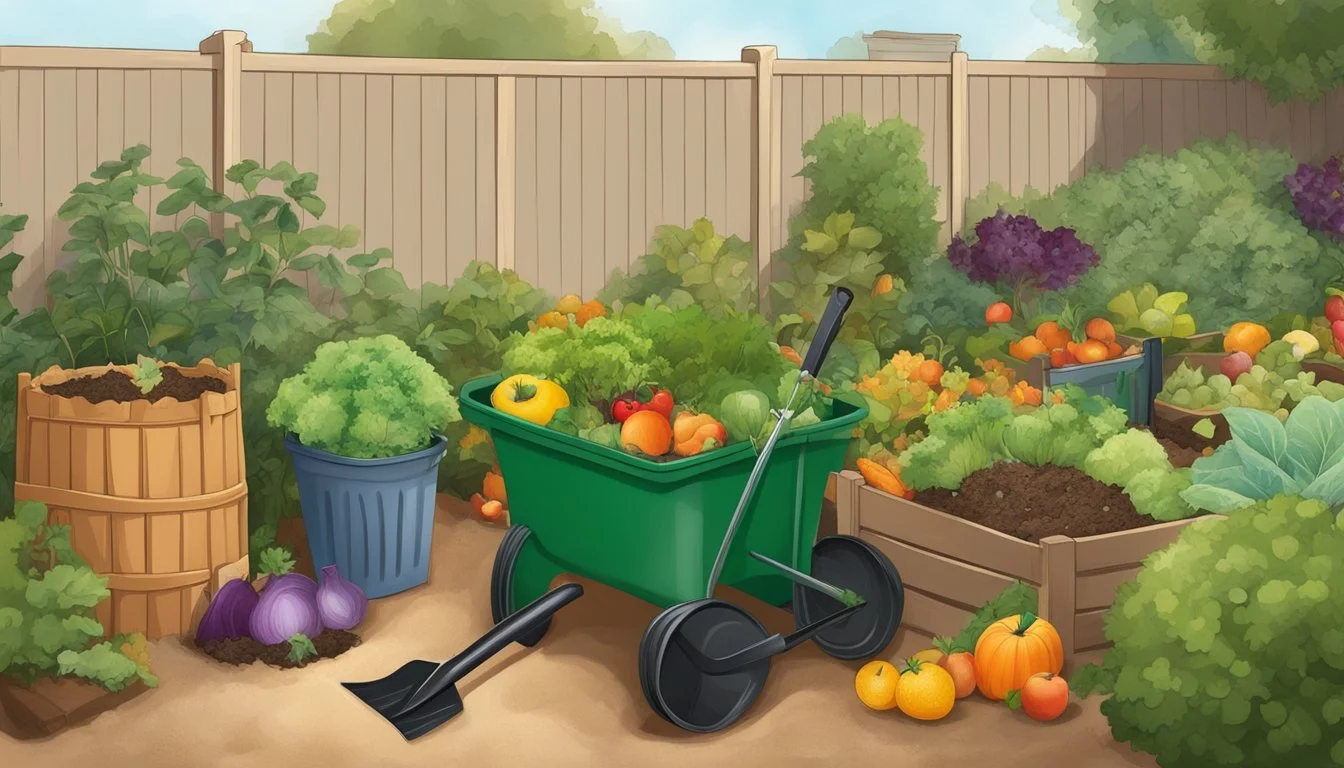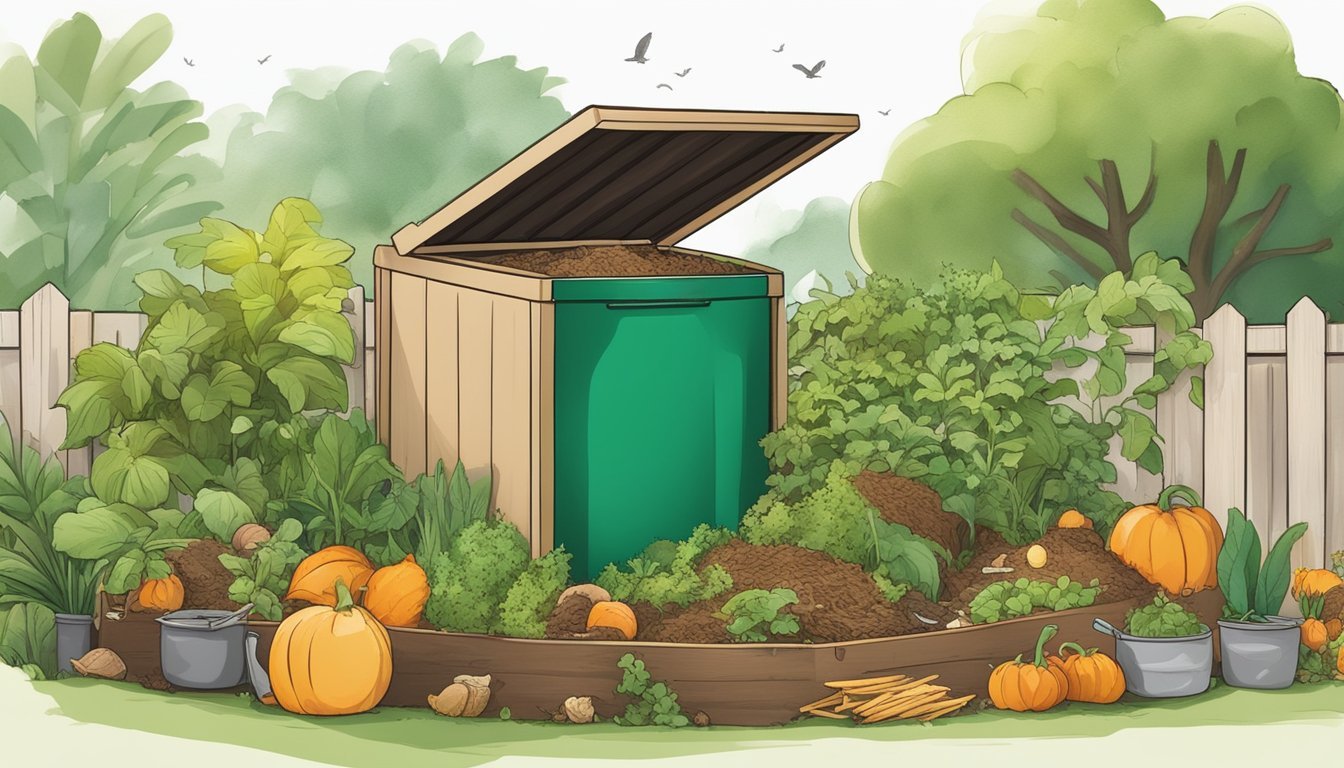Guide to Composting in Pasadena, CA
Effective Strategies for Urban Gardeners
Composting in Pasadena, California, offers an eco-friendly way for residents and businesses to handle organic waste. In line with the state mandate set by Senate Bill 1383, the city has taken robust measures to reduce organic waste disposal by 75% by the year 2025. Pasadena has implemented programs like the Curbside Organics Recycling Program, allowing residents to contribute bagged food waste along with traditional yard debris for composting. These initiatives not only support waste reduction but also help in producing nutrient-rich soil amendments, improving the health and sustainability of local green spaces.
Participation in Pasadena's organics recycling efforts contributes significantly to reducing methane emissions from landfills, which are a potent greenhouse gas driving climate change. The benefits of composting are manifold: it minimizes the transportation of waste to landfills, conserves landfill space, and turns organic waste into valuable compost used to nurture gardens and landscaping throughout the city. By engaging with local Community Compost Hubs, residents can actively partake in a sustainable practice that supports a healthier environment.
Pasadena's approach to managing organic waste reflects a broader trend of environmental responsibility and resourcefulness. By redirecting food waste and other organics away from landfills, recycling programs help maintain a balanced ecosystem. Residents receive support from the city's public works resources, ensuring that the process is straightforward and that everyone can contribute to making Pasadena a greener place.
Understanding Composting
Composting transforms organic matter like food waste and yard debris into a nutrient-rich soil amendment through natural processes. In Pasadena, this activity supports local sustainability efforts and waste reduction.
Basics of Composting
Composting requires four essential components: organic matter, air, water, and time. It's a biological process where microorganisms break down organic material into simpler compounds. The core principle is achieving the right balance between greens (nitrogen-rich materials like vegetable scraps and grass clippings) and browns (carbon-rich materials like leaves and shredded newspaper). Proper aeration and moisture are vital, as they facilitate the growth of microorganisms that process the material. Time is the final ingredient, with compost usually maturing in three to six months.
Benefits of Composting
Composting presents a multitude of benefits, including waste reduction and methane emissions reduction. When organic waste decomposes anaerobically (without oxygen) in landfills, it releases methane, a potent greenhouse gas. Composting this waste aerobically (with oxygen) significantly reduces these emissions. It also enhances soil health, improving structure, moisture retention, and nutrient content, which benefits gardens and landscapes.
Benefits of Composting Description Waste Reduction Diverts food and yard waste from landfills, reducing waste volume. Methane Emissions Lowers greenhouse gas emissions by avoiding anaerobic decomposition. Soil Health Improvement Adds valuable nutrients to soil, aiding plant growth and restoring vitality to degraded soil.
Types of Compostable Materials
The variety of compostable materials is broad, including food waste, yard waste, leaves, grass clippings, fruit and vegetable scraps, coffee grounds, egg shells, tea bags, and non-glossy shredded newspaper. It is essential that these materials are correctly balanced to ensure a successful composting process.
Food Waste: Includes fruits, vegetables, coffee grounds, eggshells, and tea bags.
Yard Waste: Encompasses grass clippings, leaves, and plant trimmings.
Paper Products: Utilizes shredded newspaper, cardboard, and paper napkins.
Properly separating and incorporating these materials into compost piles or composting programs like the Curbside Organics Recycling program helps reduce waste and contributes to a healthier environment.
Composting Guidelines in Pasadena, CA
Composting in Pasadena is part of a significant environmental effort to reduce organic waste and methane emissions. These guidelines are informed by state legislation and local programs.
Senate Bill 1383 Overview
Senate Bill 1383 (SB 1383), adopted by California, targets a reduction of organic waste disposal by 75% by 2025, emphasizing the serious intent to lower methane emissions from organic waste. It is a statewide strategy to address short-lived climate pollutants, which are potent contributors to climate change. Pasadena has taken measures to align with these goals through its organics recycling programs.
Residential Composting Instructions
Residential refuse customers in Pasadena are encouraged to participate in curbside composting. Here, residents should place bagged food waste in their yard waste containers. Backyard composting is also an option, with residents able to purchase compost bins to manage organic waste on-site. The bins should have a tight-fitting lid to prevent pests.
Business & Multi-Family Properties Compliance
Businesses and multi-family properties must comply with SB 1383 by finding suitable organic recycling options. They are directed to contact their current waste hauler for guidance on implementing necessary changes to their waste disposal practices, ensuring organic waste is properly recycled.
Setting Up Your Composting System
Setting up an efficient composting system in Pasadena is straightforward when you select the appropriate bin, correctly create your compost pile, and dedicate some time to regular maintenance.
Choosing the Right Bin
The composting bin serves as the cornerstone of suburban composting practices. In Pasadena, one must choose a bin that accommodates the volume of yard waste and food scraps while preventing issues with pests. Size is crucial; the bin should be large enough to maintain the heat needed for composting but small enough to fit in the allocated space. Options range from simple frames to specialized tumblers, which can be found at Pasadena’s Department of Public Works.
Types of Bins:
Stationary bins
Tumbling bins
Considerations:
Volume of organic waste
Available space
Creating the Compost Pile
Creating a compost pile entails building a balanced mix of brown and green materials. Brown materials, such as leaves and mulch, contribute carbon, while green materials, like grass clippings and food scraps, supply nitrogen. A successful pile needs alternating layers of each, ensuring there is a mix of air and moisture which are vital for breaking down the materials.
Layering:
Start with a layer of browns for airflow
Add a layer of greens to introduce moisture
Maintaining Your Compost
Regular maintenance of a compost bin in Pasadena involves turning the compost to introduce air and regulate temperature. Heat is essential, and turning the pile will distribute it evenly, speeding up the decomposition process. Balancing moisture levels is also necessary – the pile should feel like a wrung-out sponge. One should be mindful of over-watering, which can lead to a lack of air, slowing down the decomposition and causing odor.
Maintenance Checklist:
Turn the pile weekly to maintain airflow and heat
Adjust moisture levels as needed
Monitor for pests and take preventative measures if necessary
Pasadena's Compost Programs and Resources
Pasadena is taking significant strides in waste reduction through its organized composting efforts. This embrace of composting showcases the city's dedication to sustainability by leveraging community involvement, convenient curbside services, and educational opportunities.
Community Compost Hubs
Pasadena's commitment to sustainability is showcased through the establishment of Community Compost Hubs, located across the city, including at Victory Park and other parks. Residents can subscribe to participate in these hubs and contribute to the city's composting initiative. The hubs play a crucial role in reducing methane emissions and preserving Pasadena's green spaces.
Curbside Organics Recycling Program
The Curbside Organics Recycling Program is an innovative service offered to Pasadena residents. Participants are required to place bagged food waste into their Yard Waste Containers. This program is a direct response to city mandates and significantly contributes to lowering organic waste in landfills across Los Angeles County.
Workshops and Education
To ensure residents are well-informed, Pasadena conducts workshops and provides education on composting practices. These workshops aim to engage the community and provide knowledge on efficiently using the available composting resources. They are an essential part of Pasadena's initiative to enhance city-wide sustainability through waste reduction.
Additional Sustainability Efforts
Pasadena continues its stride towards sustainability by focusing on waste stream diversion, adhering to state regulations, and supporting local environmental initiatives.
Waste Stream Diversion
In an effort to maximize waste stream diversion levels, Pasadena encourages residents to recycle more effectively. Curbside programs target materials like plastic, paper, and glass, ensuring they do not end up in landfills. Recycling facilities are an integral component, working to sort and process recyclable materials diligently.
State-Mandated Compliance
CalRecycle oversees the state's recycling and waste management programs. Pasadena adheres to this agency's directives, aligning with state-mandated disposal reduction goals. The city is committed to meeting methane emissions reduction targets, a crucial step in California's sustainability roadmap.
Supporting Local Policies
Pasadena aligns with its Climate Action Plan, fostering community initiatives that support environmental stewardship. Membership in regional programs and adherence to a structured calendar of sustainability events reflect Pasadena's active role in local policy support. This comprehensive approach serves as a model for other cities aiming to improve their ecological footprint.
Frequently Asked Questions
The following FAQs provide essential insights into Pasadena's composting protocols, aimed at reducing greenhouse gases and adhering to state regulations.
Household Waste Management
Residents must manage various types of household waste, ensuring proper disposal to meet the city's green initiatives. Trash should be separated from recyclable materials, while household hazardous waste such as batteries and light bulbs require special drop-off at designated facilities. Food containers, zip-lock bags, bread bags, and produce bags are typically not compostable and belong in recycling or trash, depending on the material.
Specifics on Compostable Items
Composting in Pasadena accepts a range of organic materials. This includes meat, dairy, bones, and fat—all of which can be placed in the curbside organics bin. Additionally, breads and sawdust are compostable. Residents should note that lawn clippings and other yard debris are also important components of the city's organics recycling program.
Program Start Dates and Regulations
Pasadena's composting initiative aligns with California's mandate to reduce organic waste. The law, effective as of January 1, 2022, sets a compliance baseline for all Californians. Residents participating in Pasadena's programs contribute to achieving the state's goal of a 75% reduction in organic waste disposal by 2025. Compliance includes proper sorting of organic waste and adhering to waste management guidelines set forth by the city.







